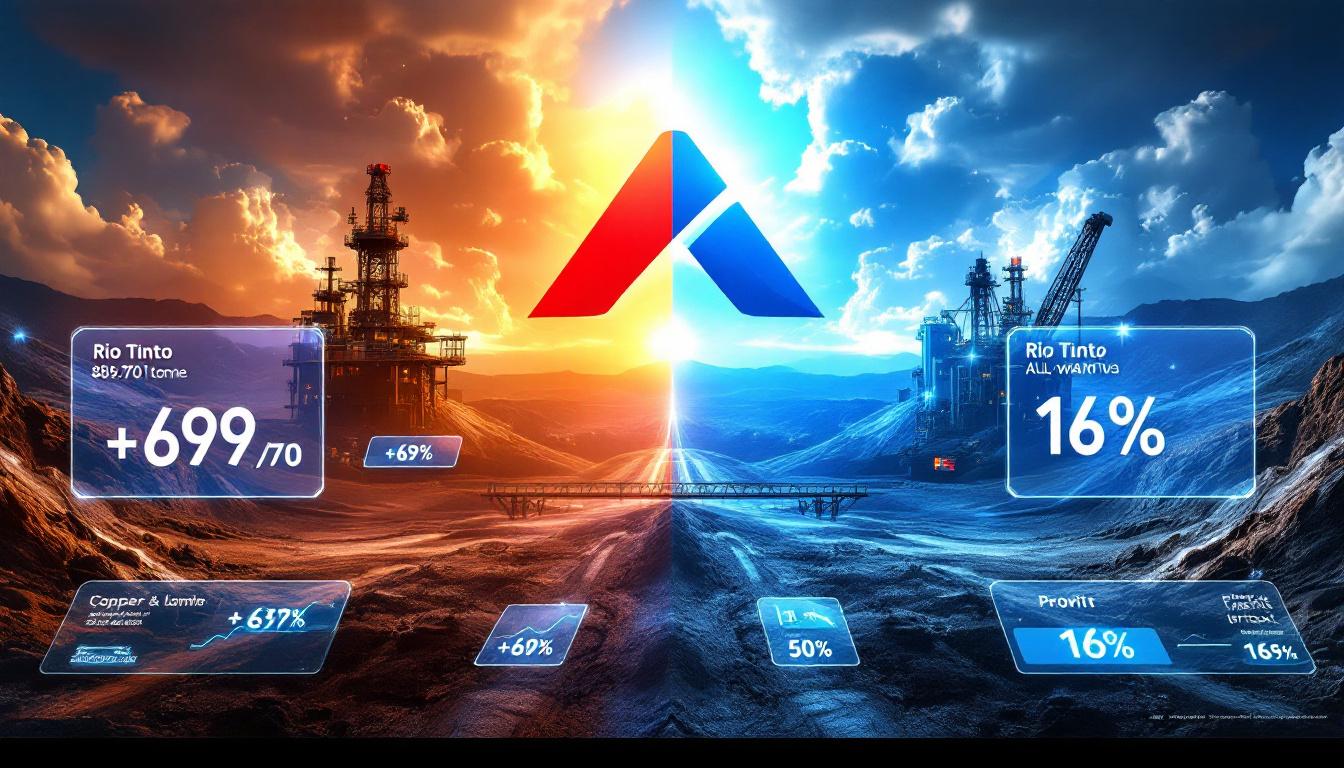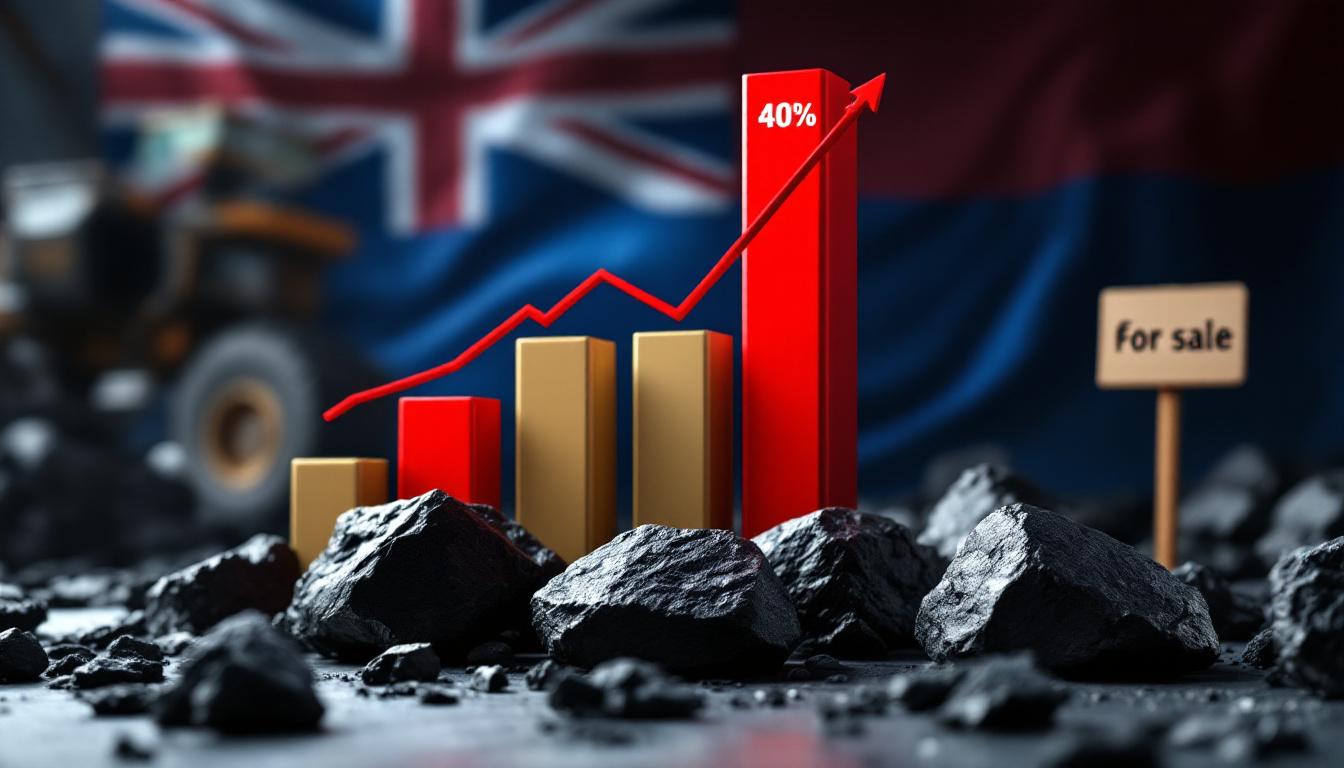Understanding ASX News and Industry Sectors: A Comprehensive Guide
The Australian Securities Exchange (ASX) serves as a cornerstone of the Asia-Pacific financial ecosystem, encompassing diverse industry sectors that drive economic growth and innovation. This guide synthesizes recent developments, market dynamics, and strategic trends across key ASX-listed companies and indices. From materials and mining to healthcare and technology, the ASX reflects both domestic economic policies and global market influences. Understanding these ASX news and industry sectors is essential for investors navigating Australia's dynamic market landscape.
What Are the Key ASX Industry Sectors?
Materials and Mining
The materials and mining sector represents one of the ASX's largest components, with major players including BHP, Rio Tinto, Mineral Resources (MIN), and South32 (S32). These companies dominate Australia's resource landscape and contribute significantly to global supply chains.
In recent reports, Rio Tinto announced a 13 million tonne reduction in Pilbara iron ore shipments due to cyclonic activity in Q1 2025, resulting in approximately $150 million in additional costs. Despite these challenges, the company maintains robust production targets for the year as part of Rio Tinto's clean energy strategy.
Copper exploration has intensified across both domestic and international projects. Companies like Antares Minerals have reported promising results at their Mt. Isa North project with copper grades reaching up to 26%, significantly above industry averages. This trend aligns with the global shift toward electrification and renewable infrastructure.
Lithium continues to attract substantial investment, with demand rising approximately 18% annually as battery technologies evolve. Australia's lithium ambitions include pursuing high-quality deposits both domestically and across Latin America's "Lithium Triangle" spanning Argentina, Bolivia, and Chile.
Energy
The energy sector encompasses traditional oil and gas operators alongside emerging renewable players. Karoon Energy exemplifies this dual approach with its Neon Oil Project in Brazil's Santos Basin, which recently increased resource estimates by 15% to target 200 million barrels of recoverable oil.
The company's innovative use of AI-driven subsea infrastructure has reportedly reduced extraction costs by 18%, demonstrating how digital mining innovations are transforming operational efficiencies in traditional energy segments.
Renewable energy initiatives now account for approximately 22% of ASX energy sector investments, reflecting Australia's commitment to energy transition. Companies are increasingly diversifying their portfolios to include solar, wind, and battery storage projects alongside conventional energy assets.
Health Care
Innovation drives the ASX healthcare sector, particularly in pharmaceutical developments and medical technology. Firebrick Pharma has gained market attention with its nasal spray product line, which achieved 35% sales growth in Q1 2025 following expanded retail distribution.
Pro Medicus represents the technology-focused segment with its Visage AI Accelerator, developed in partnership with the University of California San Francisco (UCSF). This diagnostic tool has reduced medical imaging analysis time by approximately 50%, demonstrating the transformative potential of artificial intelligence in healthcare settings.
The consumer health segment continues to expand, with companies like The Calmer Co successfully placing their Fiji Kava products in major retail chains, including Woolworths. This represents a growing trend of traditional wellness products gaining mainstream commercial visibility.
Technology
The technology sector has emerged as a growth driver on the ASX, led by companies such as WiseTech Global with its logistics software solutions. Australian tech firms are increasingly focusing on specialized niches rather than competing directly with global tech giants.
AI and machine learning applications have become central to product development strategies, with Australian companies leveraging local talent to create innovative solutions for global markets. Data analytics, cybersecurity, and financial technology remain particularly active segments.
The sector has demonstrated remarkable resilience during economic uncertainties, with many ASX-listed tech companies maintaining growth trajectories despite broader market volatility.
Consumer Sector
Retail partnerships and distribution channels play a crucial role in the consumer sector's performance. The Calmer Co's strategic placement of its Fiji Kava products in Woolworths illustrates how ASX-listed consumer companies are leveraging major retail partnerships to scale their market presence.
Market expansion strategies frequently combine brick-and-mortar distribution with e-commerce channels. This omnichannel approach has proven particularly effective for consumer goods companies navigating Australia's geographically dispersed population centers.
How Does the ASX 200 Index Work?
Index Composition
The S&P/ASX 200 represents Australia's 200 largest companies by float-adjusted market capitalization, accounting for approximately 82% of Australia's total equity market value. This makes it the primary benchmark for Australian equity performance according to ASX sectors.
The index undergoes quarterly rebalancing to ensure it accurately reflects the current market landscape. This process considers not only market capitalization but also liquidity metrics to maintain stability during volatile periods.
Current sector weightings reveal financials (28%) and materials (23%) dominating the index as of April 2025, reflecting Australia's economic foundations in banking and resources. Technology companies, while growing in influence, remain a smaller component compared to similar indices in the United States and Asia.
Performance Tracking
Daily movements in the ASX 200 provide critical insights into market sentiment and economic outlook. The index is typically compared against other Australian benchmarks such as the All Ordinaries (representing the top 500 companies) and the S&P/ASX 100 (the largest 100 firms).
Market technicians closely monitor volume patterns and volatility metrics to identify potential trend changes or confirmation signals. These technical indicators often complement fundamental analysis in professional investment strategies.
The index demonstrates measurable correlation with major global markets, particularly with Asian exchanges during their overlapping trading hours. However, it maintains distinctive performance characteristics based on Australia's unique economic composition.
Market Indicators
Beyond price movements, investors track volume and volatility metrics to assess market health. Unusually high trading volumes often signal significant information flow or changing investor sentiment toward particular sectors.
Implied volatility measurements help quantify market uncertainty, with sustained increases potentially indicating upcoming turbulence. These metrics become particularly valuable during earnings seasons and major economic announcements.
What Drives ASX Market Movements?
Domestic Economic Factors
Reserve Bank of Australia (RBA) monetary policy decisions exert considerable influence on ASX performance, particularly in interest rate-sensitive sectors like financials, real estate, and utilities. Market participants closely analyze RBA statements for future policy direction clues.
Employment data releases trigger predictable market responses, with stronger-than-expected figures typically supporting consumer discretionary stocks while raising concerns about potential interest rate increases.
Inflation readings have taken on heightened importance in the current economic environment, with unexpected variations causing significant index volatility. Sectors with pricing power, such as resources and energy, often outperform during inflationary periods.
Global Market Influences
The ASX demonstrates notable sensitivity to U.S. market performance, with movements in the S&P 500 and Nasdaq frequently setting the tone for Australia's trading session. This relationship strengthens during periods of global uncertainty.
Federal Reserve policy decisions impact Australian markets both directly through global liquidity conditions and indirectly through currency effects on resource exporters. Hawkish Fed statements often pressure commodity prices denominated in U.S. dollars.
International trade relations, particularly involving potential tariffs under changing U.S. administrations, create both risks and opportunities for ASX-listed exporters. Resource companies with significant exposure to China remain especially sensitive to trade policy developments.
Sector-Specific Catalysts
Resource discoveries and production updates generate some of the most dramatic price movements among ASX-listed companies. Exploration firms can experience substantial valuation changes based on drilling results and resource estimate revisions.
Regulatory approvals, particularly in healthcare and technology, serve as binary events that significantly impact share prices. Companies awaiting clinical trial results or patent decisions often experience heightened volatility before announcements.
Corporate restructuring initiatives, including leadership changes at major firms like Mineral Resources, create both opportunities and risks for investors as strategic directions potentially shift.
How to Track ASX News Effectively?
Daily Market Summaries
Following opening and closing reports provides essential context for daily market movements. These summaries typically highlight index performance, sector trends, and notable individual stock movements.
Key index movements reveal broader market sentiment, while sector-specific analyses identify emerging trends before they become widely recognized. These daily snapshots help investors maintain awareness of market dynamics.
Tracking notable stock performances, particularly those diverging from sector trends, often reveals company-specific developments worthy of further investigation.
Company Announcements
Quarterly updates and financial results provide structured insight into operational performance. Australian companies typically follow predictable reporting calendars, allowing investors to prepare for potential market-moving information.
Project developments and milestones, particularly for resource companies, offer valuable forward-looking indicators beyond financial statements. These operational updates often precede financial performance improvements.
Management changes and strategic shifts signal potential directional changes that may not be immediately reflected in financial results. Leadership transitions at companies like Mineral Resources warrant close attention for their long-term implications.
Specialized Market Coverage
Thematic investment trends require dedicated analysis beyond generalist market coverage. Areas like battery metals, artificial intelligence, and healthcare innovation benefit from specialized reporting.
Expert commentary from industry participants provides valuable context that complements data-driven analysis. For example, insights from representatives like Mauro Lopes of Invest Minas highlight that "Latin America offers under-explored regions with high-quality projects at 30-40% lower operational costs than Australia."
Industry webinars and discussions offer nuanced perspectives on sector-specific challenges and opportunities, particularly valuable for understanding technical developments in mining and energy.
What Investment Opportunities Exist in Australian Mining?
Domestic Projects
Western Australian resource developments continue to anchor Australia's mining sector, with the state's Pilbara region remaining central to iron ore production despite recent weather-related disruptions affecting companies like Rio Tinto.
Exploration activities across the country have intensified, with particular focus on critical minerals essential for energy transition. Companies report promising discoveries across copper, lithium, and rare earth elements.
Operational cost advantages persist for established Australian projects with existing infrastructure, though rising energy prices and labor costs present ongoing challenges for margin maintenance.
International Ventures
Latin American expansion represents a strategic priority for many ASX-listed resource companies. Brazil's Minas Gerais region, Argentina's lithium-rich salars, and Chile's established copper districts attract significant Australian investment.
The comparative advantage of overseas operations often centers on lower operational costs, with executives noting potential savings of 30-40% compared to equivalent Australian projects. These economics prove particularly compelling for early-stage developments.
Risk management in foreign jurisdictions requires sophisticated approaches, with companies like Equinox Resources emphasizing "phased development to mitigate geopolitical risks in Chile." This measured approach balances opportunity with prudent capital allocation.
Critical Minerals Focus
Battery metals continue attracting substantial investment, with lithium and copper projects receiving particular attention. Demand projections linked to electric vehicle production underpin long-term strategy for many ASX miners.
Precious metals maintain their appeal as portfolio diversifiers, with gold producers benefiting during periods of economic uncertainty. Australian gold operations typically feature competitive all-in sustaining costs compared to international peers.
Strategic resources including uranium and rare earth elements have gained prominence amid growing recognition of their importance for energy security and defense applications. Government initiatives increasingly support domestic supply chain development for these materials.
How Are ASX Companies Expanding Globally?
Latin American Opportunities
Under-explored regions across Latin America offer compelling value propositions for ASX-listed explorers. Companies like Viridis Mining & Minerals have reportedly reduced exploration costs by approximately 25% in Brazil's Minas Gerais region through strategic joint ventures.
Lower operational costs compared to Australia provide sustainable competitive advantages, particularly in labor-intensive mining operations. Companies leverage these cost differentials to accelerate project development timelines.
Improving regulatory environments across Brazil, Chile, and Argentina have reduced historical barriers to foreign investment. Mining codes have evolved to provide greater certainty while maintaining appropriate environmental standards.
Strategic Partnerships
Joint ventures with local entities facilitate market entry and navigate complex regulatory environments. These arrangements combine Australian technical expertise with local operational knowledge and stakeholder relationships.
Government collaborations, exemplified by partnerships with organizations like Invest Minas, provide valuable institutional support. These relationships help navigate regulatory requirements and build community acceptance.
Distribution agreements with international retailers have proven particularly valuable for consumer-facing companies. The Calmer Co's placement of Fiji Kava products in Woolworths demonstrates how strategic partnerships accelerate market penetration.
Market Entry Strategies
Acquisition of existing projects offers expedited pathways to production, with many ASX companies preferring brownfield expansions over greenfield development. This approach reduces permitting timelines and technical risks.
Greenfield exploration initiatives continue where geological potential justifies the additional risk. Companies targeting under-explored regions in Latin America often employ this approach when seeking transformational discoveries.
Phased development approaches mitigate capital requirements and allow adaptive responses to changing market conditions. This methodology proves particularly valuable in politically complex jurisdictions where gradual commitment limits exposure.
What Recent Corporate Developments Are Impacting the ASX?
Strategic Transactions
Capital raisings have maintained robust activity levels, with resource companies securing funding for both exploration and development initiatives. These transactions typically occur during periods of sector strength to minimize dilution.
Mergers and acquisitions activity fluctuates with commodity price cycles, with consolidation accelerating during market downturns. This pattern allows stronger companies to acquire quality assets at advantageous valuations.
Divestments and spin-offs reflect corporate strategies to unlock value from non-core assets. These transactions often result in more focused organizations with clearer investment propositions.
Leadership Changes
Executive appointments and departures signal potential strategic shifts warranting investor attention. Leadership transitions at companies like Mineral Resources highlight the importance of management quality assessment in investment decisions.
Board restructuring initiatives aim to enhance governance frameworks and bring specialized expertise. Properly constructed boards complement executive teams with diverse perspectives and experience.
Governance improvements increasingly incorporate sustainability metrics and stakeholder considerations beyond traditional financial measures. This evolution reflects changing investor expectations regarding corporate responsibility.
Operational Updates
Production milestones provide tangible evidence of project execution capabilities. Companies meeting or exceeding production targets typically receive market recognition through valuation premiums.
Weather and environmental impacts, such as cyclones affecting Rio Tinto's Pilbara operations, introduce operational variability that requires sophisticated risk management. Climate adaptation strategies have become essential components of operational planning.
Resource estimate upgrades generate significant value creation when companies demonstrate larger or higher-quality deposits than previously recognized. These technical achievements often precede substantial share price revaluations.
How Do ASX-Listed Companies Secure Retail Distribution?
Major Retail Partnerships
Woolworths distribution agreements, like that secured by The Calmer Co for its Fiji Kava products, represent significant commercial milestones. These arrangements provide immediate scale and consumer visibility.
Product placement strategies within major retailers involve sophisticated category management and often require substantial investment in merchandising and promotional support.
Market expansion through retail channels necessitates building relationships across Australia's concentrated retail landscape. Success with major chains typically requires demonstrated consumer demand and category growth potential.
Product Development
Consumer-focused innovations drive retail acceptance, with products addressing unmet needs receiving preferential shelf positioning. Differentiation through genuine innovation remains critical in competitive retail categories.
Health and wellness offerings continue gaining prominence in retail assortments, benefiting companies like Firebrick Pharma and The Calmer Co. This trend accelerated following pandemic-driven consumer health awareness.
Quality certification and compliance requirements create barriers to entry while protecting established brands. Meeting Australia's stringent regulatory standards for health products requires substantial investment in quality systems and documentation.
Marketing Approaches
Brand positioning and awareness activities require coordinated multi-channel strategies. Companies successful in retail distribution typically invest in both traditional and digital marketing to build consumer recognition.
Target demographic strategies have become increasingly sophisticated, with data analytics enabling precise audience segmentation. This capability allows companies to allocate marketing resources more efficiently.
Digital and traditional marketing channels require integrated approaches to maximize effectiveness. Successful ASX consumer companies develop complementary strategies across platforms rather than viewing channels in isolation.
What Environmental and Sustainability Trends Affect ASX Companies?
Net-Zero Initiatives
EU net-zero designations, exemplified by Talga Group's Swedish anode plant, create competitive advantages through regulatory alignment and preferential market access. These certifications increasingly influence investor allocations.
Carbon reduction strategies have evolved from compliance requirements to strategic imperatives. Companies proactively reducing emissions typically benefit from lower regulatory risk and enhanced stakeholder relationships.
Renewable energy integration continues accelerating across mining operations, with solar and battery installations reducing both costs and emissions. These initiatives demonstrate alignment between financial and environmental objectives.
Regulatory Compliance
Environmental approvals and permits represent critical path items for project development. Companies with established regulatory expertise typically achieve faster approvals while maintaining stakeholder support.
Water management solutions, including Rio Tinto's PFAS processing systems that reportedly reduced contamination risks by 90% in Pilbara operations, represent essential environmental controls. Water stewardship has become particularly important in arid Australian mining regions.
Sustainable mining practices increasingly influence project economics through both cost implications and social license considerations. Companies employing best practices typically experience fewer operational disruptions.
ESG Reporting
Investor expectations for sustainability metrics continue evolving, with approximately 68% of ASX 200 companies now disclosing Scope 3 emissions, representing a significant increase from 45% in 2022. This trend reflects growing focus on comprehensive environmental impact measurement.
Transparency in environmental impact reporting has become essential for maintaining investor confidence. Companies providing detailed, verifiable data typically receive valuation premiums compared to less transparent peers.
Social license to operate requires ongoing community engagement and demonstrable shared value creation. Companies neglecting these responsibilities increasingly face operational constraints regardless of formal regulatory compliance.
FAQ: ASX News and Industry Sectors
What are the main ASX indices to follow?
The primary ASX indices include the S&P/ASX 200
Want to Spot Australia's Next Mining Discovery Before the Crowd?
Discover high-potential ASX mineral announcements as they happen with Discovery Alert's proprietary Discovery IQ model, delivering real-time alerts on significant discoveries across 30+ commodities. Visit the Discovery Alert discoveries page to see how major mineral discoveries have generated exceptional returns and start your 30-day free trial today.




